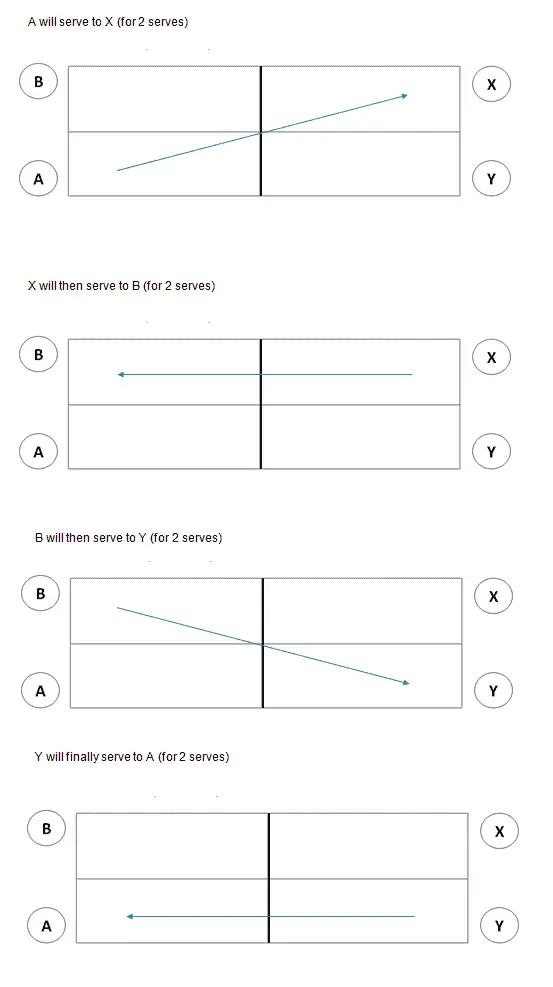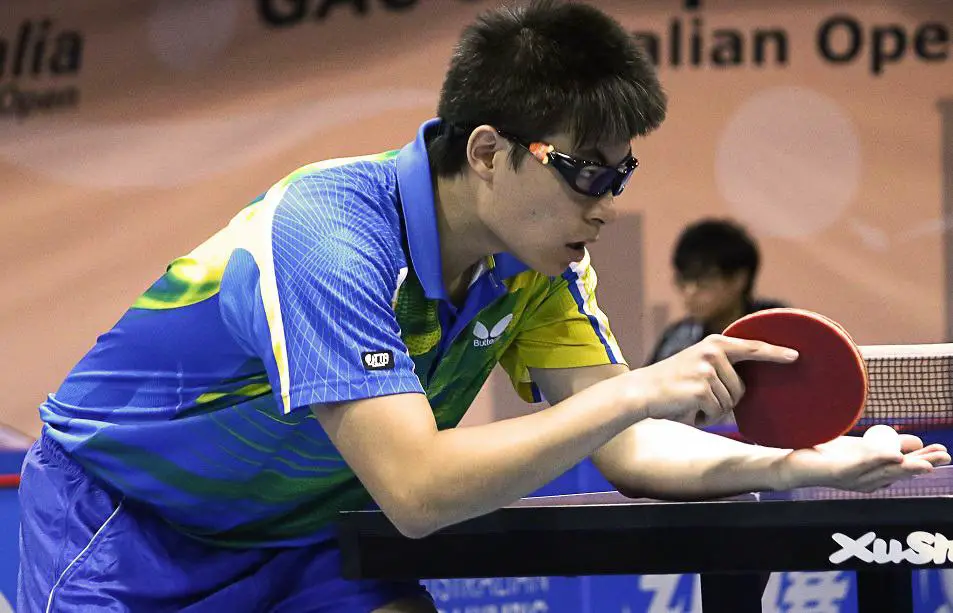As a table tennis beginner one of the first things one is curious about is to know the ins and outs of the right way to serve in the sport. In this piece we will look at the table tennis service rules for singles and doubles and what constitutes what’s legal and what’s not.
This is your guide to everything you need to know about legal table tennis serves, of course everything being in accordance with the ITTF Rules for table tennis.
And if you are wondering whether the rules for beginner and professional players are different, then worry not as they are quite the same.
However, the rules for serving in table tennis are slightly different for singles and doubles, which we will also look into in detail in this piece.
Table of Content
Basic Table Tennis Service Rules
As mentioned earlier, if you are just starting out in table tennis, it makes sense to browse through table tennis rules in general but more importantly to look at service rules because that’s your starting point in the sport.
Here’s a rundown on singles and doubles service rules.
Singles Service Rules
- Starting off with the ball within your hand, the ball must be set on the palm of your hand, having your palm flat. As the ITTF puts it the ball should be “resting freely on the open palm of the server’s stationary hand” (Ref: ITTF – 02.06.01)
- The white lines on the tennis table indicate a boundary also known as an “End Line”.
- While serving, the ball must be in the hand of the Server, ensuring that it stays behind the end line and also making sure the paddle comes into contact with the ball behind it. Moreover, it is important that the ball is not hidden from the opponent or any of the players. (Ref: ITTF – 02.06.04)
- Now to serve the ball, the server must toss the ball with force enough to make it rise above at about 16 cm from the palm, which is about the height of the net.
- Try your best to toss it up as vertically as you can and avoid tossing it backwards or into the paddle itself for your convenience as doing so would be wrong. The ball must be struck without touching anything between the toss and strike.
- Thus, once the ball is tossed in the air, the free hand and arm should be away from the space between the ball and the net (Ref: ITTF – 02.06.02, 02.06.05)
- Once the ball is struck, it should first touch the Server’s court; go over or around the net assembly; and also touch the Receiver’s court. (Ref: ITTF – 02.06.03)
Also Read:
Does a Singles Table Tennis Serve Have to be Diagonal?
You may have heard that many racket sports like squash, badminton and tennis requiring the players to serve diagonally across the court. But that is not the case for table tennis serves in singles plays, i.e. table tennis singles players can serve the ball wherever they wish to without being worried about the serve needing to go diagonally across the table.
Doubles service rules however, do differ.
Doubles Service Rules
The doubles service rules are all the same as the singles rules with one change to them.
It might get a bit confusing but hang in there; you will get it right eventually.
In doubles play, the server must serve from their right side of the table diagonally to their opponents’ right-hand side. As shown in the diagram below:

In the above table tennis match, A and B are playing X and Y.
Assuming A starts serving, he/she will get two serves which will be received by X. This will be followed by X serving the next two to B, followed by B serving to Y and then Y to A as shown in the above image.
Let’s assume in the first game of the match A will be serving first and he/she will serve diagonally across the table towards X. X’s return will have to be received by B, whose shot will then need to be taken on by Y. Rinse and repeat the rally till the point is completed. (Ref: ITTF – 02.08.02)
The next game will begin with the service by either X or Y. For the sake of argument, let us assume X is the server. As the rule goes, the server has to serve from the right side of their court, hence Y will serve to his/her right side, in order to do which, he/she will trade places with X. (Ref: ITTF – 02.13.04)
This will continue alternately every game.
Also Read:
Violations in Table Tennis Service
- The ball should not be held with the fingers but in the server’s palm. This is so that the server does not spin the ball making it difficult for the receiver to receive. The ball must be tossed up with a flat palm.
- Hiding the ball from view of any of the players is illegal. That includes striking the ball in a manner where the arm of the server blocks the view of any other player or striking the ball from below the table thus again blocking it from view.
- The ball must be struck from behind the end line, not crossing it or above it with either the hand or the paddle at any point while serving. It should also be thrown up from above the table and not below the table so as to allow the opponent to watch the serve till the very end.
- Quick serves are also illegal as they are considered bad manners in table tennis sportsmanship, leaving the opponent unready to receive the serve.
- The ball needs to be tossed vertical, or near-vertical. It a violation of rules if you throw the ball back or if you throw it towards your own body. The odd mistake might be overlooked but it’s against the rules for the ball-toss to not be vertical.
- The ball cannot be hit when it’s thrown up during the serve toss, only when it’s coming back down
Table Tennis Serve Rules FAQ
Here are some of the frequently asked questions related to the table tennis service rules in both, singles and doubles.
Can you serve in table tennis from outside the width of the table?
Yes, it is legal to serve from anywhere towards the left or right of the table as long as you aren’t transgressing the imaginary end line that extend on both sides of the table.
How high must the ball be tossed in a table tennis serve?
The ball must be tossed at least six inches or 16 cm. It’s illegal to serve the ball straight out of the hand, again in a bid to allow opponents to watch the ball during the serve.
What happens if the ball touches the net on service and goes over to the other side?
If the rest of the rules are followed and the ball hits the net and pops over to the other side, the umpire will call a let. The point will then be replayed.
Final Words on Table Tennis Service Rules
As service rules in racket sports go, the table tennis serving rules in both singles and doubles aren’t the most difficult to comprehend with very little by the way of restrictions. Once you have read through the above article, you should have no worries in getting your table tennis serves in order and kick-starting your table tennis playing journey.


